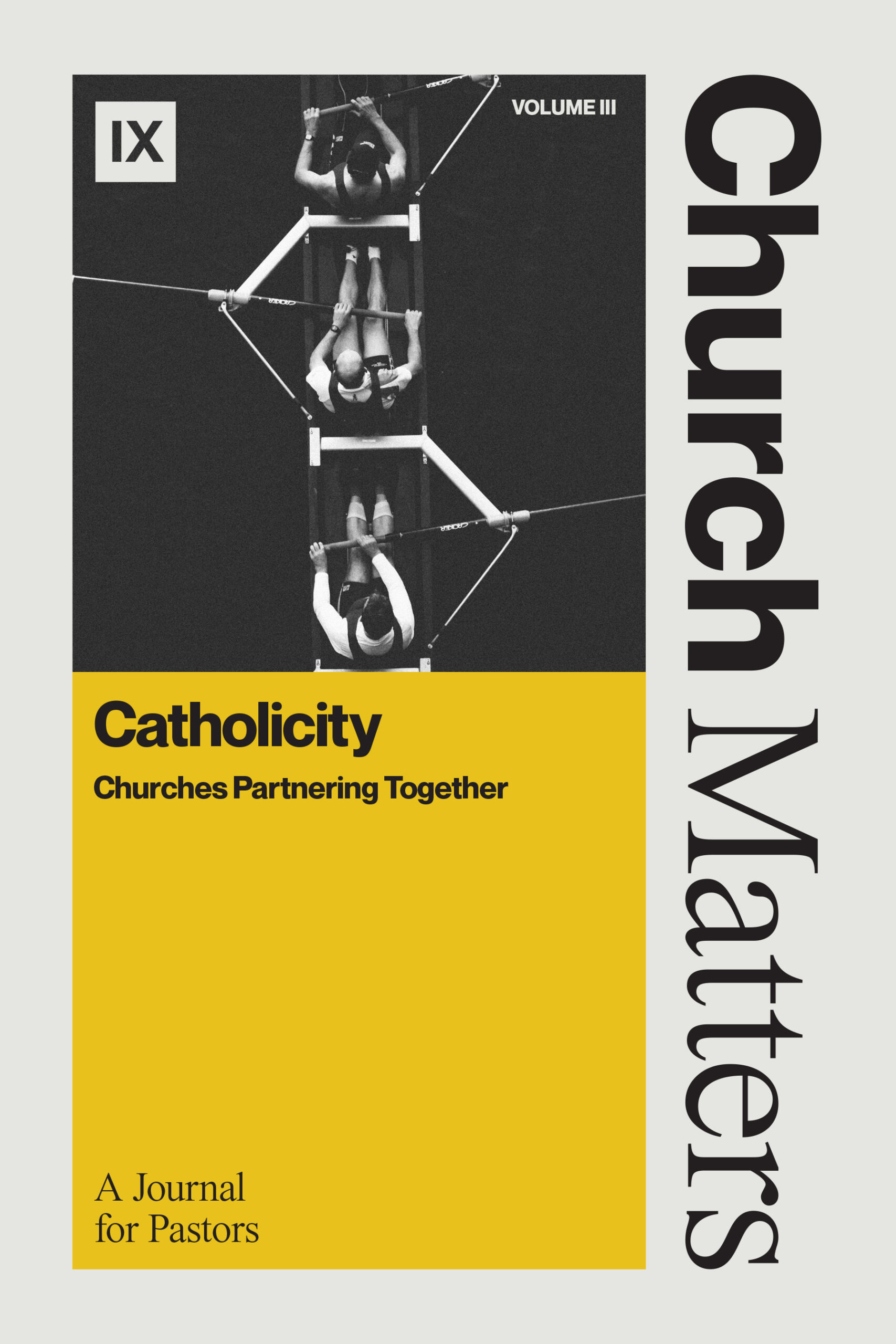Why Racist Churches Are Anti-Catholic
Racism is a direct affront to Scripture, to the gospel, and to the Nicene Christianity that follows from them. Racism, as we are using it here, is any prejudice or antagonism against others on the basis of ethnicity or skin color.
The third article of the Creed commits us to the four notae ecclesiae, or marks of the church: “I believe . . . in one, holy, catholic, and apostolic church.” The third of these marks, the church’s catholicity, signifies not just an abstract and benign “universality,” but the church’s concrete wholeness, her spatial extension and temporal perdurance, and her global and eschatological dimensions as the body of Christ.
Entailed in this affirmation is an embrace of the church’s national, ethnic, and racial diversity. One important test, then, for how committed someone is to catholicity is how much they value the beautiful multiethnic nature of the kingdom of Christ.
MULTI-ETHNICITY IN SCRIPTURE
From the very beginning of his covenantal dealings with man, God designed to include “all the families of the earth” in redemption (Gen. 12:3). He chose Israel with this multinational end in view. The book of Isaiah especially highlights God’s multiethnic purposes. We learn that Egypt and Assyria will take their place alongside Israel as a “blessing in the midst of the earth” (Isa. 19:24). It is “too small a thing” for the promised Servant of the Lord to save just Israel; he will also be a “light for the nations” so that the Lord’s “salvation may reach to the end of the earth” (Isa. 49:6).
The gospel of Christ comes to the Jew first, to be sure. But even during his earthly ministry, Jesus gives us ample previews of the eventual Gentile mission. Consider the Persian Magi, the Canaanite woman, the Gadarene demoniac, the Samaritan woman, and the Roman centurion, among others.
After his death and resurrection, Christ sends out his followers to make disciples of all nations (Matt. 28:18–20). In the body of Christ—the “new man”—the walls of hostility are torn down (Eph. 2:11–22). Not just the separation of Israel and the Gentiles but all divisions are rendered obsolete: “Here there is not Greek and Jew, circumcised and uncircumcised, barbarian, Scythian, slave, free; but Christ is all, and in all” (Col. 3:11; cf. 1 Cor. 12:13).
The mission of the church culminates in a “great multitude that no one could number, from every nation, from all tribes and peoples and languages, standing before the throne and before the Lamb” (Rev. 7:9). Unity in Christ amidst all kinds of diversity is the beginning, middle, and end of the story.
MULTI-ETHNICITY IN LOCAL CHURCHES
When churches intentionally exclude certain races or ethnicities, foment racial division, or embrace the myth of racial superiority—or when they provide safe harbor to those who do—they compromise this central feature of biblical and creedal Christianity: catholicity.
This is not to say every church has a racial diversity quota that it must fill. Some churches will quite naturally be more diverse than others. A church in a comparatively mono-ethnic part of the country will naturally be more mono-ethnic. Common language, shared cultural experience, and forms of worship may also draw people of the same race or ethnicity into the same church. This is not necessarily sinful. The question is one of attitude and intention, of context and opportunity. Is diversity welcome? Does the church cordon off part of its community as somehow omitted from its mission field?
Racism, like any other sin, can manifest itself in more obvious and overt ways and in more subtle and deceptive ways. As the Southern Baptist Convention’s 1995 “Resolution on Racial Reconciliation” put it, racism can be both “individual and systemic” and can be expressed either “consciously (Psalm 19:13) or unconsciously (Leviticus 4:27).”
Sadly, one doesn’t need to look very hard to find professing Christians expressing overtly antisemitic and anti-black sentiments online. But again, racism can also express itself in more subtle and “sophisticated” ways. Proponents of critical race theory or “anti-racism” can end up proposing a kind of reverse racism of their own. On the other hand, criticisms of these ideologies can become a net that catches too many fish, casting suspicion on legitimate, biblical attempts at racial reconciliation.
The last several years have been a crucible for American Christianity on these issues. We know of churches that have experienced fissures over things as benign as a call to prayer after a police shooting or a sermon on biblical principles for racial reconciliation. Likewise, we know of churches that have experienced attrition because of more progressive activism on these issues as well. In both cases, the church simply mirrors the surrounding culture, rather than embodying the counter-cultural, division-destroying power of the gospel.
There is something to be said for churches that intentionally pursue racial diversity. The church should be a place where the supernatural power of the gospel of Christ overcomes our natural divisions, be they racial, economic, cultural, or otherwise. Even the New Testament church had to overcome the tendency to divide along ethnic lines. The case of the neglected Hellenist widows is especially instructive (Acts 6:1–7). Whether the partiality was intentional or not is difficult to discern, but the church responded by appointing the Seven (all with Hellenistic names) to remedy the oversight. Again, the gospel tears down not just the wall between Jews and Gentiles but also between Hellenists and Hebrews, Greeks and barbarians, slave and free.
Some have criticized the pursuit of racial diversity in the church—no matter the form—as if it were simply aping the norms of the ambient, secular culture, or as if it were inevitably beholden to some nefarious philosophical system (like critical race theory or cultural Marxism). To be sure, some are wrongly influenced by these cultural pressures and philosophies. The pursuit of racial diversity, when untethered from biblical discernment or when pursued as an end in itself, derails a church’s focus. But the pursuit of ethnic and racial diversity can also simply be a function of obedience to the Great Commission. The diverse communities within a church’s purview are not going to reach themselves. Intentionality is needed. And when God so blesses, racial harmony in the body of Christ becomes a moving testimony to the counter-cultural power of the gospel.
CONCLUSION
The church is catholic, whether we realize it or not. The church is universal and whole because the church is a singular body with a singular Head. The end of the story is already written. The eschatological church is global, and it is diverse. Which is to say, the future is catholic. Celebrating the church’s ethnic and racial diversity in the present is simply getting on board now with what will be the case for all eternity.










